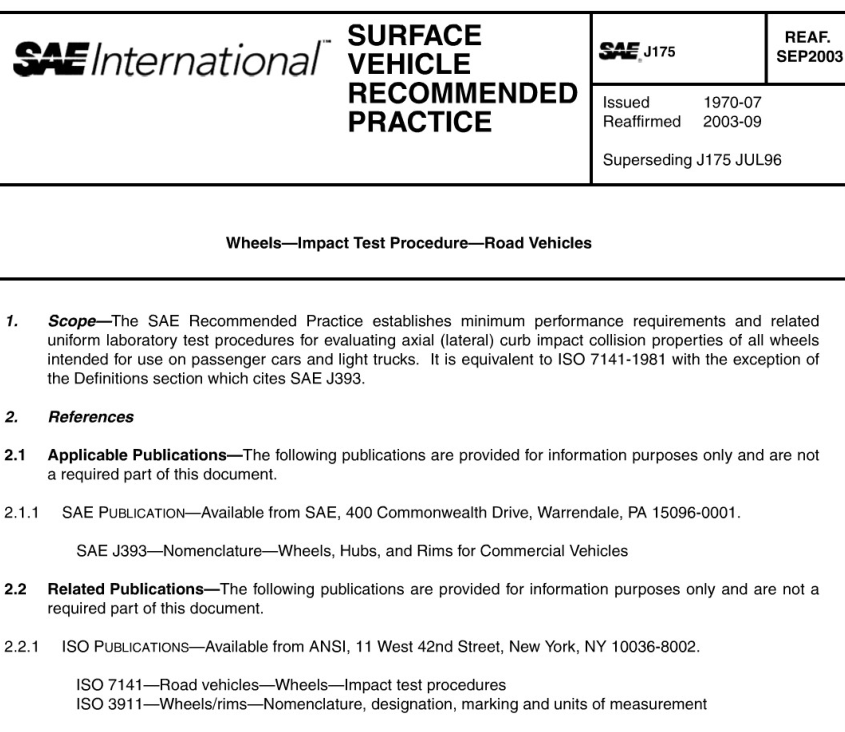SAE J175:2003 pdf download Wheels—lmpact Test Procedure-Road Vehicles
1. Scope-The SAE Recommended Practice establishes minimum performance requirements and related uniform laboratory test procedures for evaluating axial (lateral) curb impact collision properties of all wheelsintended for use on passenger cars and light trucks. lt is equivalent to lSO 7141-1981 with the exception ofthe Definitions section which cites SAE J393.
2.References
2.1 Applicable Publications—The following publications are provided for information purposes only and are not a required part of this document.
2.1.1 SAE PUBLICATION—Available from SAE,400 Commonwealth Drive, Warrendale, PA 15096-0001.
SAE J393—Nomenclature—Wheels,Hubs, and Rims for Commercial Vehicles
2.2 Related Publications—The following publications are provided for information purposes only and are not a required part of this document.
2.2.1ISO PUBLICATIONS—Available from ANSI,11 West 42nd Street, New York, NY 10036-8002.
ISO 7141—Road vehicles—Wheels-lmpact test procedures
ISO 3911—Wheels/rims—Nomenclature, designation, marking and units of measurement
3.Definitions—See SAE J393.
4. Test Procedures
4.1 Wheels for Test—Only fully-processed new wheels which are representative of wheels intended for passenger car and light truck applications shall be used for each test. Tires and wheels used for test shouldnot be used subsequently on a vehicle.
4.2Equipment—The test machine shall be one in which an impact loading is applied to the rim flange of a wheel complete with tire. The wheel shall be mounted with its axis at an angle of 13 degrees ± 1 degree to thevertical so that its highest point is presented to the vertically acting striker. The impacting face of the strikersystem shall be at least 125 mm wide and at least 375 mm long. (See Figure 1.)
4.3Procedure—Adjust the striker mass to the magnitude calculated in 4.3.3. lt is necessary to rigidly constrain any weights added to the striker mass so that is acts as one mass. The wheel shall be mounted on the hubfixture by a means dimensionally representative of attachment used on the vehicle. The wheel attachmentsystem shall be manually tightened to 115 N-m ± 7 N-m or the torque recommended by the vehicle or wheelmanufacturer.
The tubeless tire selected for the test wheel shall be the smallest nominal section width tire intended for usewith the wheel, by the vehicle or wheel manufacturers. The inflation pressure shall be that specified by thevehicle manufacturer; in the absence of such specification, it shall be 200 kPa.
Because the design features of the wheel may vary, a sufficient number of locations on the circumference ofthe rim shall be tested to ensure that the integrity of the wheel is investigated. A separate wheel shall be usedfor each test.
SAE J175:2003 pdf download
